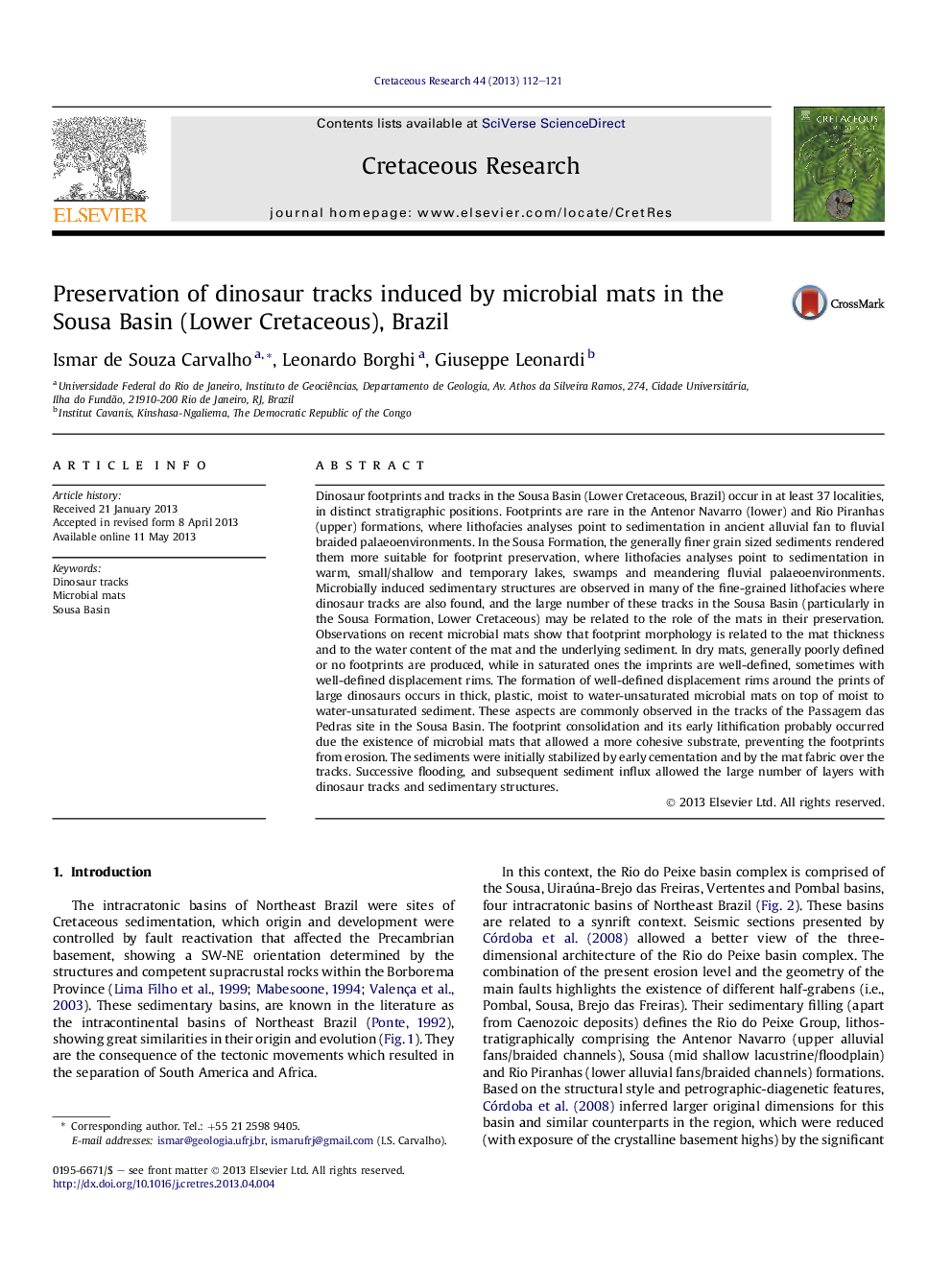| کد مقاله | کد نشریه | سال انتشار | مقاله انگلیسی | نسخه تمام متن |
|---|---|---|---|---|
| 4747236 | 1642078 | 2013 | 10 صفحه PDF | دانلود رایگان |
• Microbially induced sedimentary structures are observed in fine-grained lithofacies where dinosaur tracks are also found.
• The large number of dinosaur tracks in the Sousa Basin may be related to the role of microbial mats in their preservation.
• The microbial mats allowed a more cohesive substrate, preventing the footprints from erosion.
• Successive flooding, and subsequent sediment influx allowed the large number of layers with preserved dinosaur tracks.
Dinosaur footprints and tracks in the Sousa Basin (Lower Cretaceous, Brazil) occur in at least 37 localities, in distinct stratigraphic positions. Footprints are rare in the Antenor Navarro (lower) and Rio Piranhas (upper) formations, where lithofacies analyses point to sedimentation in ancient alluvial fan to fluvial braided palaeoenvironments. In the Sousa Formation, the generally finer grain sized sediments rendered them more suitable for footprint preservation, where lithofacies analyses point to sedimentation in warm, small/shallow and temporary lakes, swamps and meandering fluvial palaeoenvironments. Microbially induced sedimentary structures are observed in many of the fine-grained lithofacies where dinosaur tracks are also found, and the large number of these tracks in the Sousa Basin (particularly in the Sousa Formation, Lower Cretaceous) may be related to the role of the mats in their preservation. Observations on recent microbial mats show that footprint morphology is related to the mat thickness and to the water content of the mat and the underlying sediment. In dry mats, generally poorly defined or no footprints are produced, while in saturated ones the imprints are well-defined, sometimes with well-defined displacement rims. The formation of well-defined displacement rims around the prints of large dinosaurs occurs in thick, plastic, moist to water-unsaturated microbial mats on top of moist to water-unsaturated sediment. These aspects are commonly observed in the tracks of the Passagem das Pedras site in the Sousa Basin. The footprint consolidation and its early lithification probably occurred due the existence of microbial mats that allowed a more cohesive substrate, preventing the footprints from erosion. The sediments were initially stabilized by early cementation and by the mat fabric over the tracks. Successive flooding, and subsequent sediment influx allowed the large number of layers with dinosaur tracks and sedimentary structures.
Figure optionsDownload as PowerPoint slide
Journal: Cretaceous Research - Volume 44, August 2013, Pages 112–121
